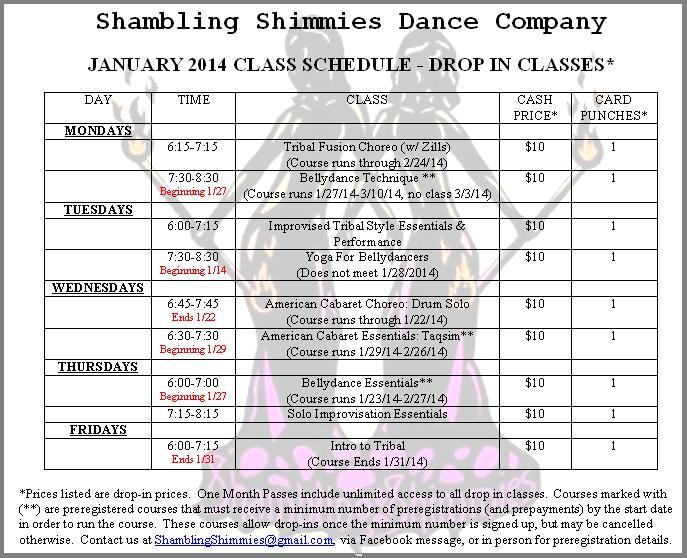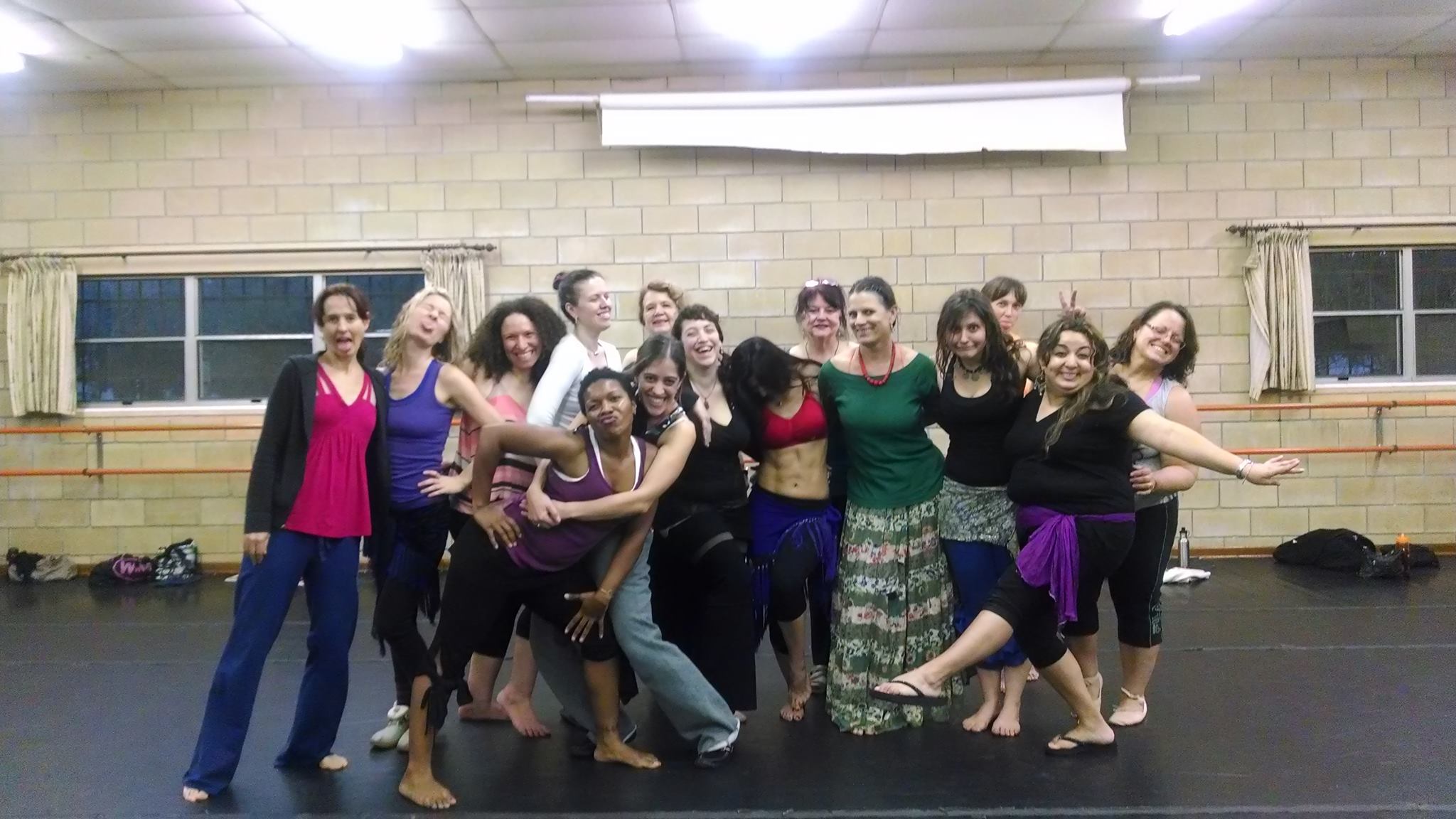In the past, though sadly not so much today, it was not uncommon to have a full belly dance show performed at a restaurant or nightclub. These shows generally followed a set progression that still influences how belly dance shows are laid out today. Today we’re going to talk briefly about that show structure, and about a new project we are about to start at the Shambling Shimmies School of Belly Dance.
The show structure commonly used in the 60s and 70s for restaurant dancing in the United States was a 7 part show. Shira has a good article on her site [link] for further reading, but I’ll very briefly list the 7 parts here:
1. Entrance, to greet the audience.
2. Slow, flowing music with veil (previously wrapped and tucked).
3. Fast or medium-speed song to keep the show moving.
4. Floorwork, sword/tray balancing, or standing taqsim (slow).
5. Fast or medium-speed song to bring the energy back up.
6. Drum solo.
7. Finale.
In a 7 part show, each section is a full song. Currently, it’s less common for a dancer to be hired for such a long show, so she will often use a variation on the 7 part format, taking 3 or 5 of the parts, which still gives her the opportunity to present variety and an interesting progression, in the reduced amount of time more commonly available today.
While it’s rare, especially in Gainesville, to see a professional belly dancer hired for solo shows in a restaurant or nightclub, this totally still happens in larger cities. Today, it’s more common to see belly dance performed at a hafla (hafla means party, and is commonly used in the US to describe a party or similar event where there will be belly dancing).
At most haflas there will be multiple dancers, most likely with different skill levels and presenting different styles of belly dance. Haflas are huge fun because they provide a great opportunity for belly dancers to get together to support and enjoy each others’ dancing, and they also provide performance opportunities for students that are ready to begin getting practice performing for an audience. As an audience member, seeing belly dance performed in a club or restaurant show is different from seeing it at a hafla, and even more different from seeing it in a stage show.
When planning a hafla’s performance lineup, the organizer will often take into consideration the style of belly dance each dancer plans to perform, props they plan to use, or the music they plan to use, in order to lay out a pleasing and interesting progression for the audience. When possible, the classic 7 part show may influence the ordering of the acts.
Harkening back to this era in belly dance history, we’re about to start a new project at the studio. In our belly dance sampler class (currently on Mondays), we’re going to go through a 5 part show!
We’ll be including choreographies for:
1. Entrance
2. Veil
3. Uptempo (with Zills)
4. Taqsim (with Optional Floorwork)
5. Drum Solo
We’ll actually be going through them in reverse order (so that the pieces which will require the most practice are learned earlier in the series). When all 5 pieces have been taught, the group that is ready to perform will get a full set at the monthly Student Showcase! (Dancers do not need to commit to learn and perform all 5 pieces, students who have learned at least one choreography to a performance level will be eligible to participate.)
We’ll also be going through much shorter and simpler ‘tastes’ of all 7 parts in the belly dance party jam class on Thursday nights!
The belly dance stylization we’ll be using for this project is something that is perhaps best described as American Vintage – heavily inspired by Jamila Salimpour, the style includes a variety of movements from multiple middle eastern dance genres. We still call the stylization American because it came about in the United States when immigrants from many cultures came to the U.S. and people began to share their own music and dance with one another. Jamila Salimpour is a pioneer in the field that codified many movements and preserved a format that is still in use today. Though she’s very well known for her Bal Anat performances at Renaissance fairs, which used a tribal stylization and presentation (including a chorus or backline and featured dancers, still used today in both ATS and ITS), it may be less known that at the time, those same dancers changed costumes and performed the same movements to different music in shows at nightclubs and restaurants in the evenings.
Hope to see you in class!
XOXO
~Heather



